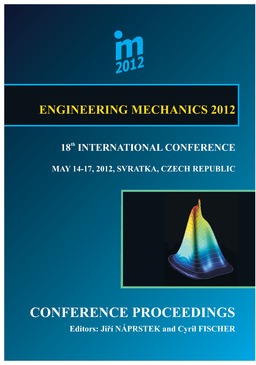Proceedings Vol. 18 (2012)

ENGINEERING MECHANICS 2012
May 14 – 17, 2012, Svratka, Czech Republic
Copyright © 2012 Institute of Theoretical and Applied Mechanics, Academy of Sciences of the Czech Republic, v.v.i., Prague
ISBN 978-80-86246-40-6 (electronic)
ISSN 1805-8248 (printed)
ISSN 1805-8256 (electronic)
list of papers scientific commitee
pages 1087 - 1102, full text
An inverse method was used to estimate the vocal tract geometry as a 1 D model on the basis of acoustical characteristics of a professional musical singer before and after vocal exercising. The basic geometrical data for the model were obtained from magnetic resonance images (MRI) registered during sustained phonation of vowels [a:], [i:], [u:] produced in naive and professional ways (before and after exercising respectively). The model was used for numerical simulations of the voice signals. The results of simulation were compared to the acoustic recordings. According to the results, a singer’s formant cluster was accomplished after exercising. It seemed to be due to lowering of the larynx and lengthening and narrowing of the epilarynx. The area ratio between the low pharynx and the epilarynx increased for [a:] but decreased for [i:] and [u:] after exercising being between 3.33 and 4.39. There was a qualitative agreement between 3D measurements of MRI and the results of modeling. The results suggest that for a singer’s formant cluster a relatively low pharynx over epilarynx ratio may be sufficient, at least if the larynx lowers.
back to list of papers
Text and facts may be copied and used freely, but credit should be given to these Proceedings.
All papers were reviewed by members of the scientific committee.

 Powered by
Imce 3.20 © 2023, Pavel Formánek, Institute of Thermomechanics AS CR, v.v.i. [generated: 0.0110s]
Powered by
Imce 3.20 © 2023, Pavel Formánek, Institute of Thermomechanics AS CR, v.v.i. [generated: 0.0110s]